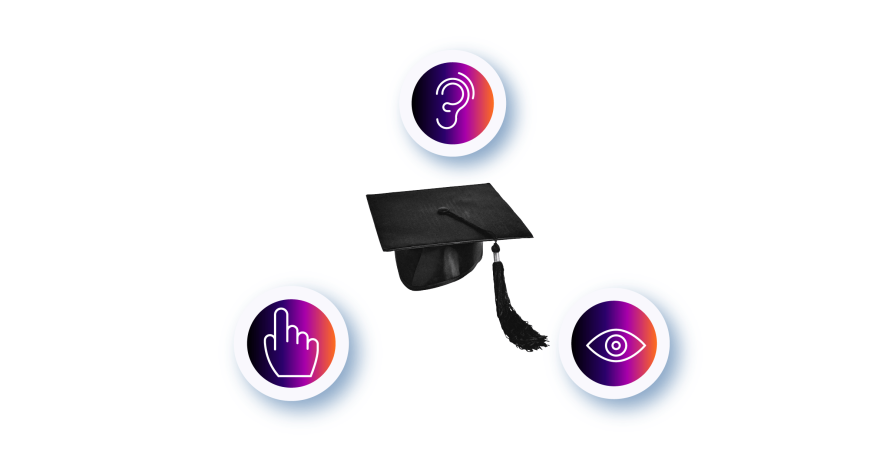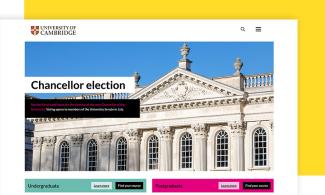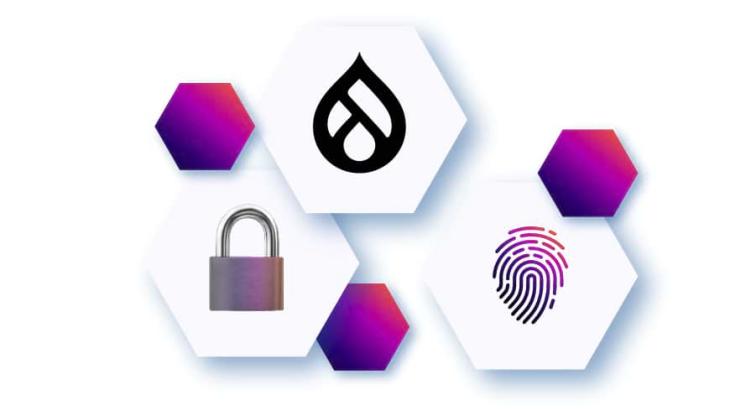Filters
Content Type
Topics
Best Practices for ADA Implementation in Higher Education
With universities moving more towards online platforms, it is vital to prioritize accessibility. The Americans With Disabilities Act (ADA) compliance goes beyond physical accommodations to include virtual classrooms, AI chatbots and immersive online experiences.
With nearly 20% of undergraduates in the U.S. now reporting disabilities, universities face legal and reputational risks if they fail to accommodate these students. However, navigating ADA regulations, Web Content Accessibility Guidelines (WCAG) guidelines and emerging technologies could bring some significant challenges.
In this article, we will take a closer look at ADA compliance in higher education and show you some insights and best practices, from website accessibility to using AI and VR for inclusive learning.
Whether you work in a university, design courses or support students, this article will help you balance accessibility and innovation.
Legal Documentation and ADA: Striking the Balance
Image

State-funded colleges and universities must protect disabled students from discrimination under Title II of the Americans with Disabilities Act (ADA), while private institutions fall under Title III. Federally funded educational institutions are required to avoid discriminating against individuals with disabilities under Section 504 of the Rehabilitation Act of 1973.
Initially, the ADA focus was on physical environments, ensuring campuses had ramps, elevators and accessible accommodations for students with disabilities. As our world becomes more digital, the focus has shifted.
The WCAG presented a clear framework for making digital content accessible to all. By embracing WCAG and catering to students' diverse needs, institutions can create a more inclusive academic experience. New rules ensure access for individuals with disabilities to all services, programs and activities on websites and mobile apps. They emphasize the importance of higher education institutions prioritizing digital accessibility for ADA compliance.
The Family Educational Rights and Privacy Act (FERPA) protects the students’ privacy and education records. When making ADA accommodations, educational institutions must follow FERPA rules to respect privacy while addressing accessibility needs.
In higher education, it is crucial for institutions to proactively maintain ADA compliance. Regular audits of digital platforms can help identify accessibility barriers and prompt correction. Providing staff with training on ADA requirements and accessibility best practices equips them with the necessary knowledge and skills. Establishing an ADA task force or committee can promote collaboration and accountability, driving efforts to enhance accessibility further.
Enhancing ADA Compliance in Higher Education With Technology
Technology can assist in meeting the diverse needs of learners and ensuring ADA compliance in higher education. Here are several ways it improves accessibility:
- Descriptive alt text allows visually impaired students to access visual content using screen readers.
- Maintaining sufficient contrast ratios between text and background enhances readability for users with low vision or color blindness.
- Correct use of headings improves readability and helps screen reader users navigate efficiently by structuring content with properly nested headings.
- Keyboard accessibility is important for students with motor disabilities who can't use a mouse. It enables them to navigate websites, fill out forms and interact with content.
- Accessible forms improve usability for all users, including those using assistive technologies like screen readers, by designing forms with clear labels, logical tab order and error messages linked to fields.
- Using meaningful link text helps people using screen readers understand the purpose and destination of the link.
- Ensuring that embedded documents, like PDFs, are accessible is essential. This includes tagging PDFs with a logical structure, providing alt text for images and avoiding saving text blocks as images.
Universal Design and ADA: A Strategic Approach in Education
Universal Design (UD) makes products, environments and digital content accessible to everyone without requiring any modifications or specific designs. UD guarantees inclusivity in educational technology within the framework of ADA compliance. For instance, UD in a physical environment could look like incorporating family bathrooms into buildings. These are a practical solution not only for students with young children but also for wheelchair and mobility aid users and students who require assistance from an additional person.
Applying UD Principles in Education Technology
Designing digital platforms and resources with UD in mind allows institutions to proactively address diverse learner needs and create an inclusive learning environment. Important UD elements in educational technology include:
- Perceivable: Ensuring digital content is accessible through sight, hearing and touch. This involves providing alternatives like video transcripts for deaf or hard-of-hearing students and audio descriptions for students with visual impairments.
- Operable: Designing digital interfaces that are intuitive and easy to navigate for all users, regardless of their abilities. This includes keyboard navigation, clear menus and consistent layout and design.
- Understandable: Providing digital content in a clear and straightforward way helps all students comprehend and engage effectively, using plain language and intuitive instructions.
- Robust: Creating digital content compatible with assistive technologies and devices and ensuring reliable access and interpretation by all users involves adhering to technical standards and guidelines like the WCAG.
Role of UD in Accessible Digital Content
UD ensures that all students, regardless of their abilities, can access information through accessible digital content. This involves offering options like video transcripts and audio descriptions, making the content understandable and perceivable for students with sensory impairments. By implementing UD principles, institutions can improve accessibility and comply with ADA regulations, ensuring equal access to educational resources.
Overcoming Barriers: Tech Innovations for Inclusive Learning Environments
Innovative technologies are revolutionizing higher education for students with disabilities, breaking down traditional barriers and creating inclusive learning environments. Here’s how:
Assistive Technology
Assistive technology has evolved to support ADA compliance. It offers solutions, such as screen readers, speech recognition software, specialized keyboards and alternative input devices to help students with disabilities access educational resources.
Technological Advancements Enhancing Learning Experiences
Artificial intelligence (AI) and virtual reality (VR) have the potential to enhance the learning experiences of disabled students:
- AI-driven accessibility tools: AI can analyze and adapt digital content in real time for students with disabilities. For example, AI algorithms can generate alternative text for images, translate text into braille or provide personalized learning recommendations based on individual preferences.
- Immersive learning with VR: Virtual reality technology offers immersive learning experiences for diverse needs. Students with disabilities can explore virtual environments, participate in simulations and engage with interactive content. VR can simulate real-world scenarios, provide hands-on learning and accommodate students with impairments.
From K-12 to College: Smoothing the Transition With ADA-Compliant Tools
K-12 schools have a legal responsibility to provide any necessary accommodations for students with disabilities in primary and secondary education. In higher education, however, it is the student's responsibility to request the modifications they need from the college.
This shift is important for protecting the privacy and autonomy of college students with disabilities. Colleges must require students to initiate requests for modifications so that they can make decisions about the accommodations they need.
Examples of Reasonable Modifications
- Extending exam time helps students with disabilities complete assessments without disadvantage.
- Offering audio recordings of lectures helps students with auditory processing disorders or hearing impairments access course content.
- Providing braille materials allows visually impaired students to study independently.
- Offering sign language interpreters or real-time captioning ensures effective communication for deaf or hard-of-hearing students.
- Providing note-takers or access to lecture notes helps students with disabilities understand and retain course material.
- Holding classes in buildings with ramps and elevators enables students with mobility impairments to attend without barriers.
Advance Your ADA Initiatives With Pantheon's Platform
As the world gets more inclusive, it is important to keep education aligned with the latest accessibility standards. Pantheon is a great place to start when advancing your ADA initiatives. As a world-class WebOps platform, Pantheon ensures fast and reliable hosting for WordPress and Drupal sites, making everyone’s time on your site smooth, effortless and enjoyable.
Pantheon has undergone rigorous assessment, aligning with WCAG 2.1 AA standards to guarantee user accessibility. Our dedication to continuous improvement and innovation ensures that our technology evolves alongside ADA guidelines and compliance requirements.
Take the next step toward accessibility and inclusivity by joining us for our webinar, The State of Higher Education Websites: Marketing Technology Insights. You will discover how Pantheon can improve your higher education websites to be a safe and inclusive space for all!


